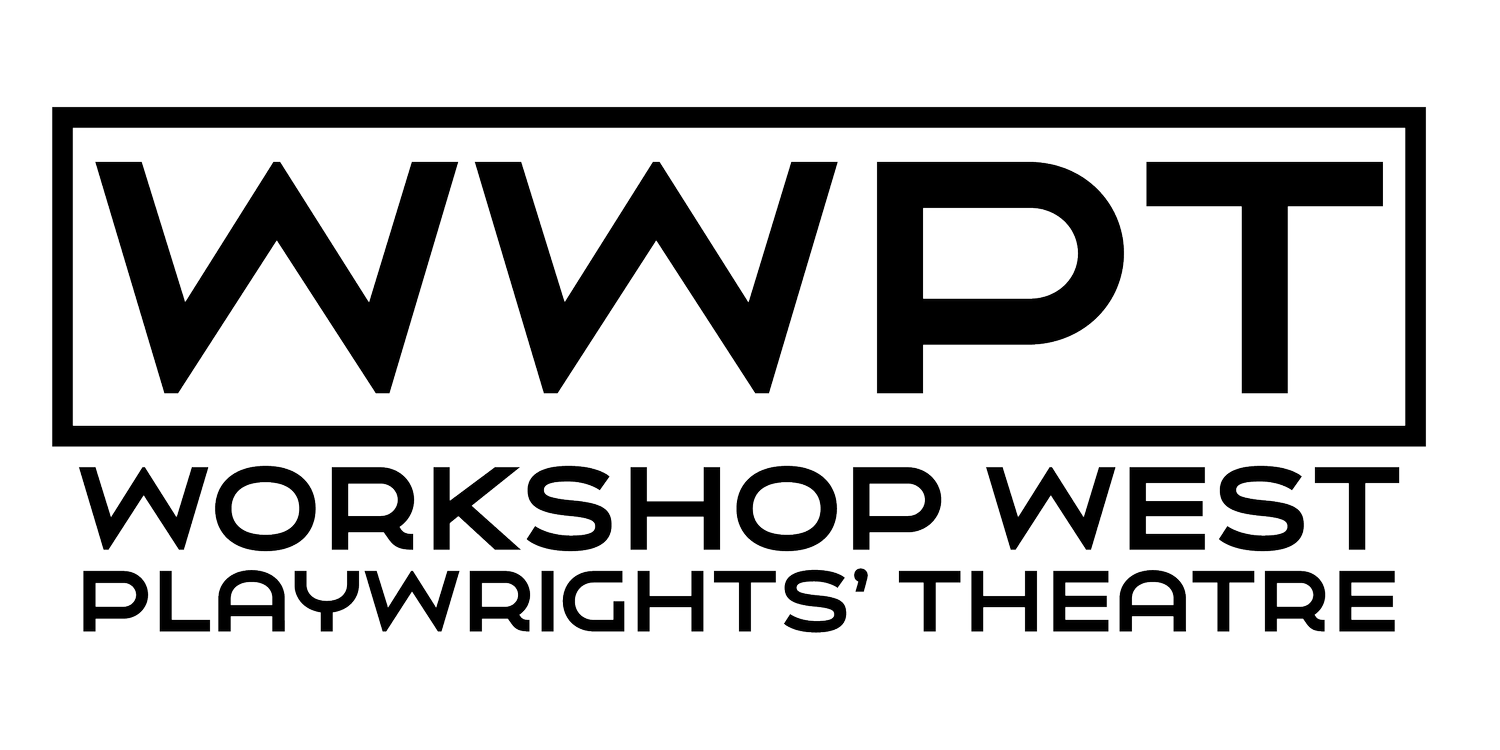Heather Inglis on Dialogue
Heather Inglis
Artistic Producer of Workshop West Playwrights’ Theatre
Why is it we can talk to some people for hours, while with others we run out of things to say in a matter of minutes? This question is at the heart of what makes theatre work as an art form. Whether monologue or dialogue, theatre is a conversation. Words emulating speech are spoken by actors in real-time and space in front of an audience. The conversation at its heart is both spoken and unspoken and has the drive and energy to be sustained over a duration of time. Audiences conspire with artists to solve the mystery of what is underneath the words that can’t be articulated with simple, straightforward language.
We are hard-wired to tell stories. We’ve been telling stories as long as there’s been language. We think and remember in stories and turn just about everything we experience into one. Each story is a sequence of cause and effect arranged to explore how one action leads to an outcome, which then becomes a new action. And so, every story is an exploration of our fascination with how we cannot, try as we might, control the outcomes of our actions with absolute certainty. We never know what will happen if we answer the phone, talk to a stranger, or reveal our true thoughts to our friends. And so, there is tension, expectation, and a bit of danger in everything we do and in every story. This “danger” is at the root of what sustains great dialogue in the theatre. Audiences wait with the characters to discover what is underneath each line of dialogue and watch for how what is said and unsaid unleashes a sequence of consequences in real time.
Practically speaking, the “method” revolves around the notion that we want emotional and psychological things from each other, and we rarely ask for what we want. Instead, we implement a series of indirect strategies and tactics to get these things. In rehearsal, actors mine the minute nuances of dialogue on the page—the punctuation, the repetition, the pauses, the word choices, the derivation of the word choices, the logic or illogic of sentences, to discover who characters are and what drives them to speak each line to one another. The tension between what is said and what is not said, but which is desired, is the mechanism by which theatrical conversations are sustained and ordered into story structures where cause inevitably leads to effect. Since plays are written to be performed by actors, an understanding of the processes actors use to inhabit and perform text is an essential tool for writing theatrical dialogue.
Playwright/actor Beth Graham also uses these tools to drive her playwriting practice. Like Williams, she strives to write dialogue where characters push each other with words, forcing them to confront their frailties and reveal who they are. Both writers describe their work as driven by character. Since theatre’s defining trait is dialogue, this means actors and audiences are collecting information about characters primarily through the words they speak.
Dialogue in play carries this information in both its structure and execution. Graham pays close attention to the language characters use. She listens to the way she hears people talk, observing the rhythm of their speech, how repetition is used, how and when they pause to develop thoughts, when they interrupt each other, and where they code-switch. For Graham, the rhythm of a character’s speech is the key to capturing who they are. Discovering characters who have complimentary rhythms that make for exciting dialogue when they ping-pong off of each other is a necessary tool in sustaining a story that makes audiences sit up in their seats.
The notion that good dialogue comes from careful listening is echoed by playwright Darrin Hagen, who says: “If photography teaches how to see, dialogue teaches how to listen.” Like Graham, he carefully observes what he hears in modern speech and applies it to his plays. For Hagen, the job of the writer is to take the raw material of everyday conversation and transform it into art by injecting poetry into the words. Inspired by his work as a musician, he tries to make his characters’ voices poetic without making them sound poetic. Often inspired by verbatim theatre techniques where the words of real people are the starting points for plays, he sculpts phrases of speech using repetition, image, metaphor and multiple meanings to lift them into dialogue. For Hagen, words are rhythm and sentences are melodies. He thinks of dialogue like music and will sometimes know instinctively how a scene should end because, like music, the song of the characters is naturally moving towards a conclusion.
Hagen says finding poetry in commonplace language is his task as a playwright, “without poetry, there is nothing beautiful… the more meanings something can have, the richer it gets.” Theatre is more akin to poetry than other forms of writing. It relies on what is unsaid and the spaces between the words to carry its true meaning. Great dialogue for the theatre creates a recipe that cues the work of actors in rehearsal and on the stage, without telling them (or the audiences) what drives it. It leaves space for the performers to inhabit the poetry of its secret life. It leaves space for audiences to discover that which cannot be expressed in words. It gets its heartbeat and transmits its meaning by pointing to the mystery, offering what is unsaid and what remains in silence as its gift.


